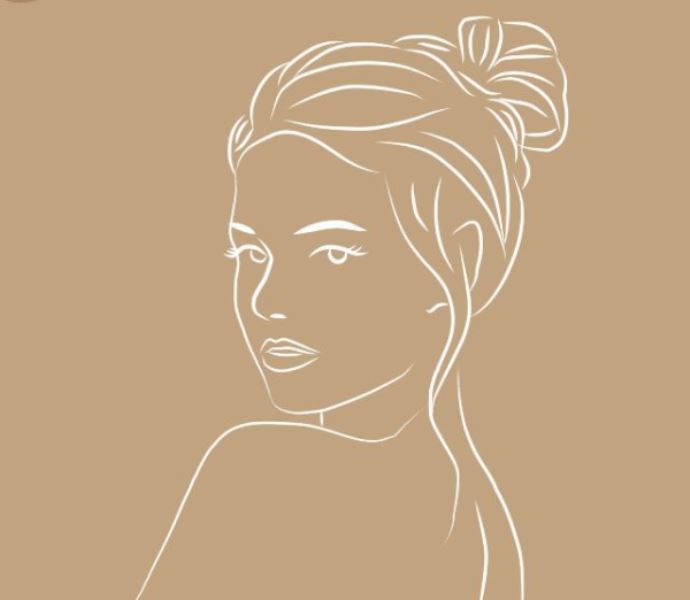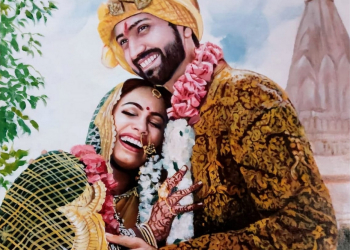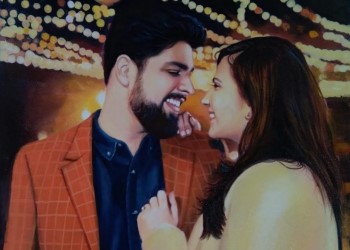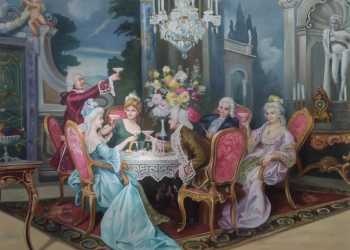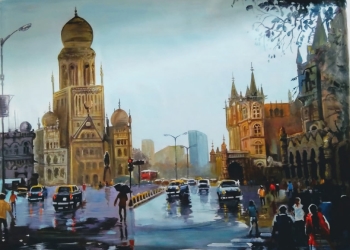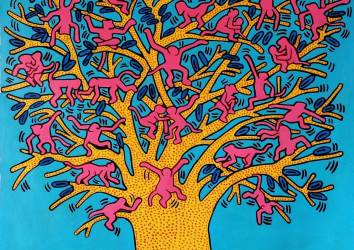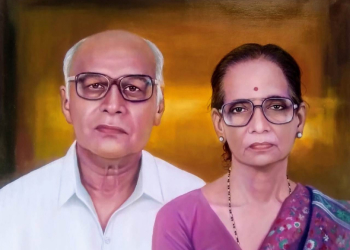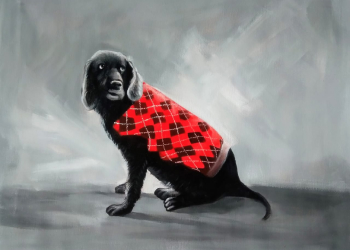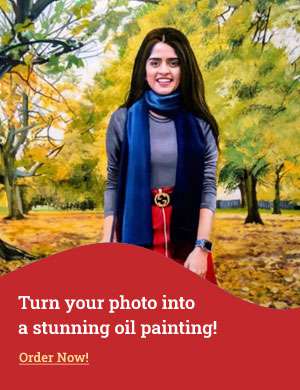"I leave you my portrait so that you will have my presence all the days and nights that I am away from you."~ Frida Kahlo
Since you have decided to make a portrait painting. It may be to gift your husband on your wedding anniversary or maybe it is to gift your best friend for their engagement. Whatever the reason, now that you have decided to gift a portrait painting, you are now confused about what portrait painting to order. This article will help you decide. In this article, we will discuss the types of portrait painting.
Portrait paintings can be categorized primarily into three groups. The classification of the portrait paintings depends on:
A. According to the length of the painting
B. According to the pose in the painting
C.According to the people included in the painting
According to the length of the painting:
The length has been one of the oldest ways to classify painting. Based on the length of the painting, portraits can be classified as:
Full-length Portrait Painting from Photo
As the name suggests, a full-length portrait painting from a photo captures the whole body of the subject in the portrait frame. In full-length portrait paintings, the background of the paintings is important. The background provides the context for the painting of the subject. The artist explores the background with shades and strokes to provide context to the subject and to provide relief and contrast to the subject.
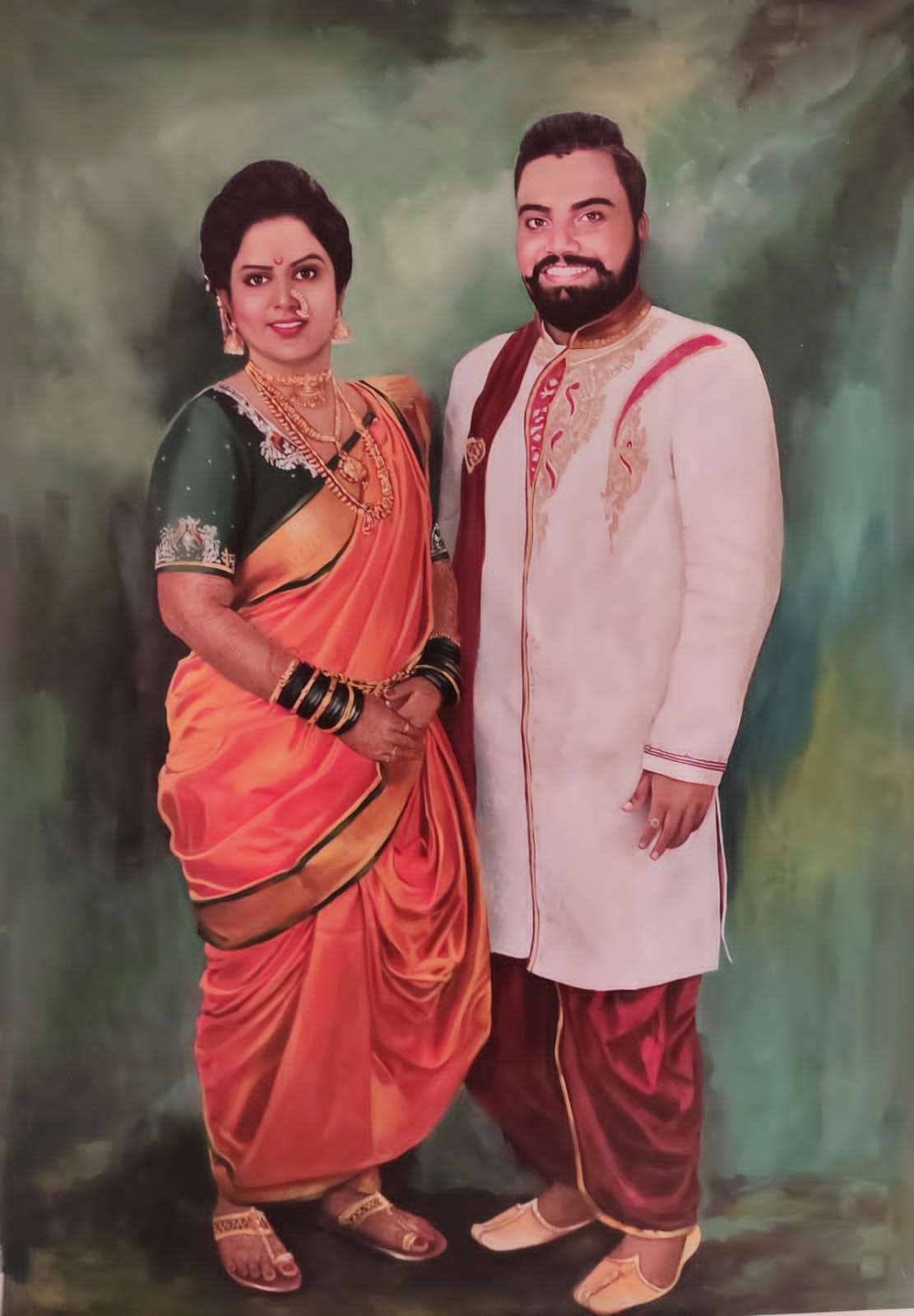 Full-length couple portrait oil painting
Full-length couple portrait oil painting
Portraits like these are reminiscent of 17th-century and 18th aristocratic portraits when royals liked to be portrayed fully length by court artists. Portraits of full-length figures are of important figures or people of social status, and these portraits serve to reinforce and convey their social status.
Full-length portraits are a perfect way to remember and celebrate a person's life events, like a wedding. Or as a memorial portrait to commemorate the life of an important distinguished person, so that his life and services are remembered and his life’s values are imbibed as a lesson by the next generation.
Half-length Portrait Painting from Photo
Half-length portraits depict the upper half of the human body, from the waist up, in a portrait painting. The attention of the viewer is drawn to the main subject of the painting. The background of the painting plays a less important role and is done in monochrome shades. These types of portraits are more popular among patrons of art.
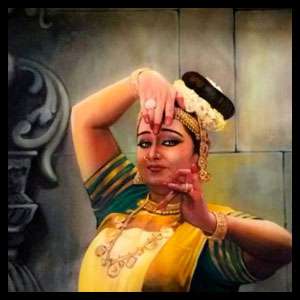 Half Length oil portrait painting
Half Length oil portrait painting
Half-length portraits are used to depict all kinds of portraits, be it couple portraits, children's portraits, or single-person portraits.
Three-quarter-length Portrait Painting from Photo
As the name suggests, three-quarters of portrait paintings depict the subject from the knee up. These types of paintings provide a balance between full-length paintings and half-length paintings.
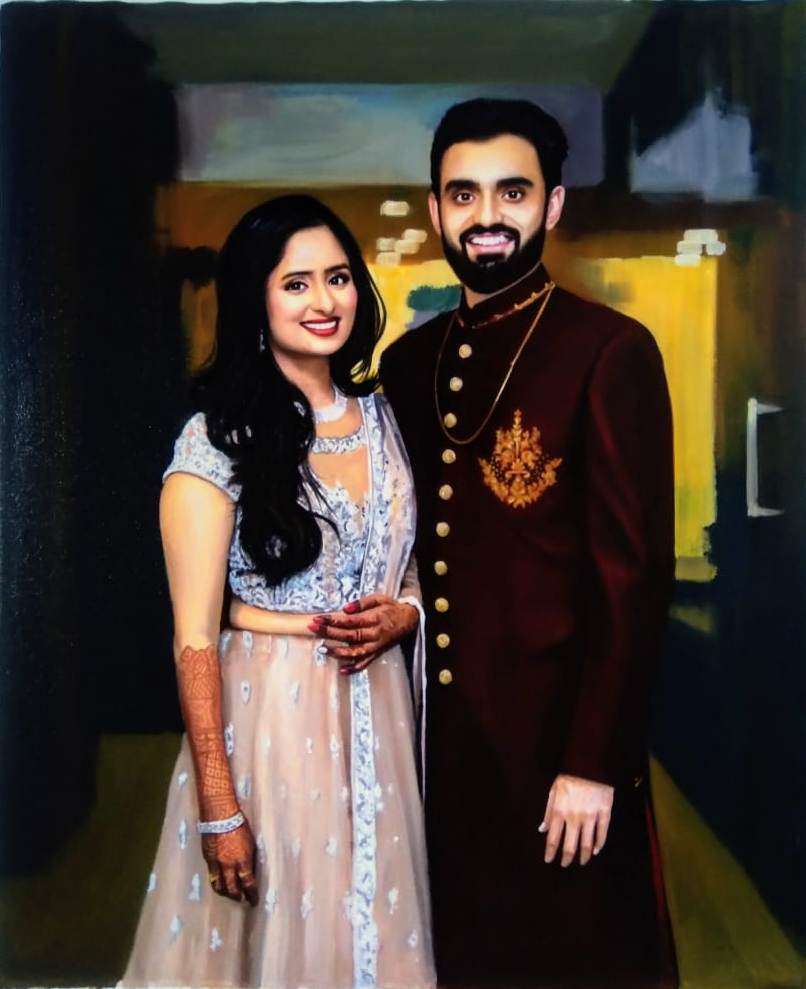 Three-quarter-length oil portrait painting
Three-quarter-length oil portrait painting
These types of portrait paintings are not very popular because of the 'incomplete' depiction of the subject.
Order Your Portrait Painting from Photo Today
Bust view Portrait Painting from Photo
The bust view portrait, also known as the face and neck view portrait, focuses entirely on the subject's head and neck portion. This eliminates the need for an elaborate background for the portrait painting. In a bust view portrait, the subject's facial profiles are emphasized, and the subtleties of his or her expression and other features.
 Bust view oil portrait painting of Pramukh Swami Maharaj
Bust view oil portrait painting of Pramukh Swami Maharaj
Much of the efforts of the artist's are spent on depicting facial profiles, subjective expressions, and other facial nuances. Bust-view paintings are used to depict religious and spiritual leaders and other important personalities.
Kit Kat Portrait Painting from Photo
A kit-cat portrait or kit-kat portrait is a particular size of the portrait, less than half-length, but including the hands. As its name suggests Kit-cat portraits were named after the Kit cat club of London, whose members included prominent writers and intellectuals, who believed that parliament had more authority than the monarchy and advocated a protestant as the King succeeding to the throne.
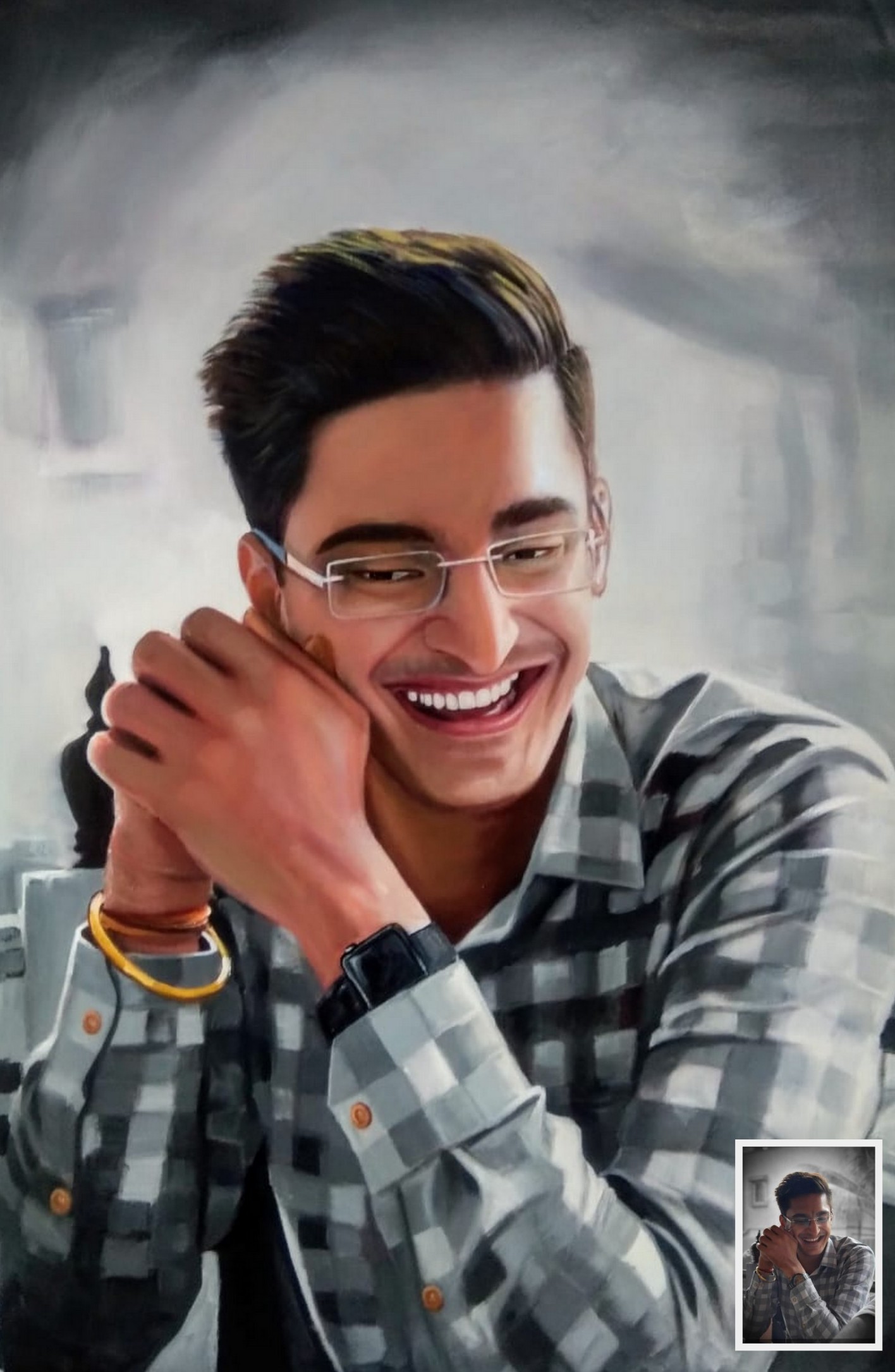 Kit Kat oil painting portrait example
Kit Kat oil painting portrait example
A tradition was established in the club, whereby club members would present their portraits to the club secretary Jacob Tonson, who hung them in the club. The paintings were executed by artist Sir Godfrey Kneller, who executed the paintings for over twenty years. The size devised of the Kit-cat portraits was thirty-six inches by twenty-eight inches.
According to the pose in the painting:
Portrait paintings can also be classified based on the pose used in the painting. Poses used in the portrait painting can be
Profile View Portrait Painting
In profile view, as the name suggests, the portrait painting captures the profile of the subject. The artist intends to depict the physical form factor of the subject at an angle. In many cases depicting a subject at an angle creates more depth and is more pleasing aesthetically.
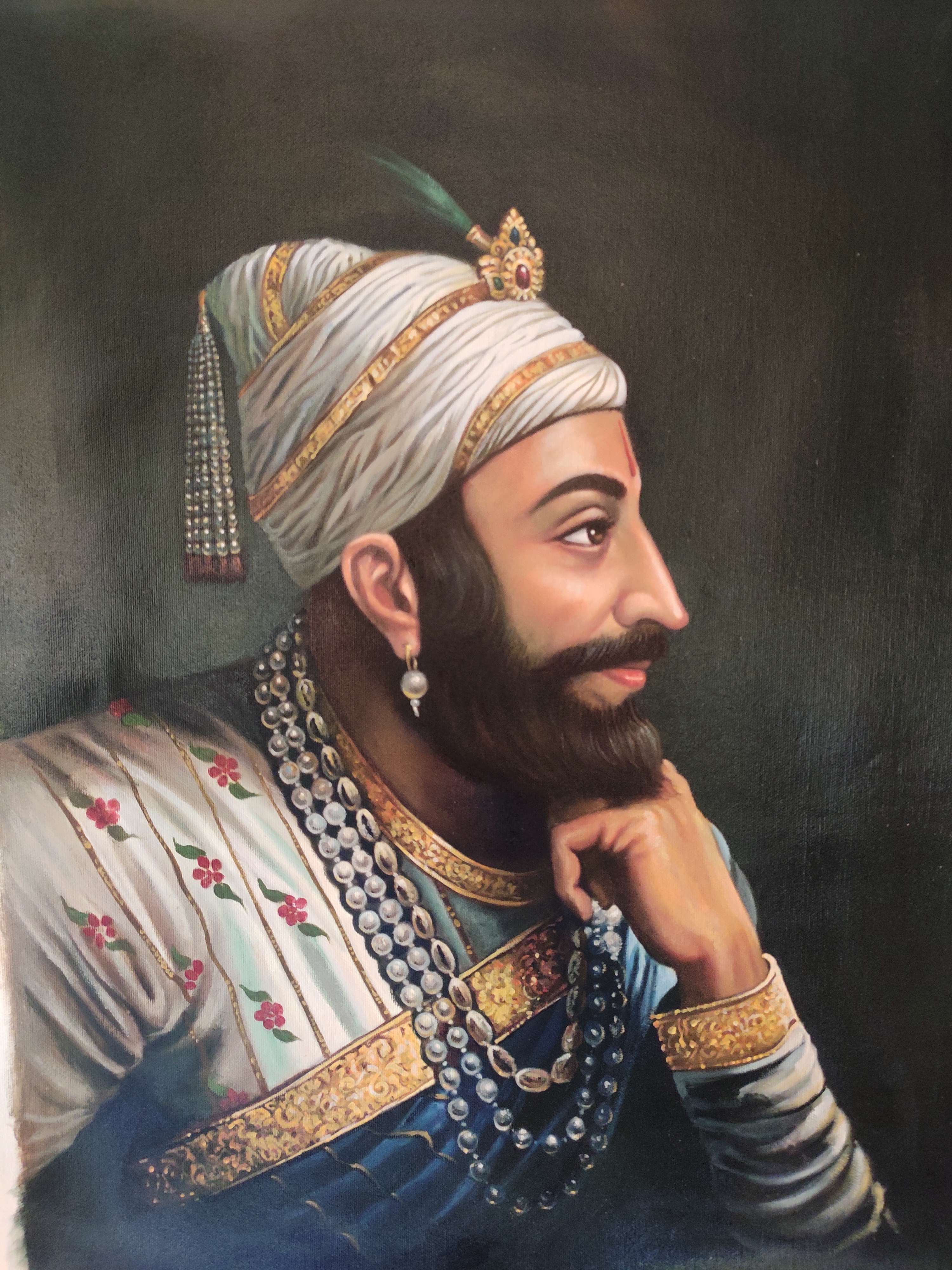 Profile view oil portrait: Chhatrapati Shivaji Maharaj
Profile view oil portrait: Chhatrapati Shivaji Maharaj
Profile views are popular for depicting many historical and eminent personalities.
Full face view Portrait Painting
Full face as the name suggests, the artist depicts the full frontal face of the subject. The subject may directly look at the viewer or the glance could be more indirect, as though the subject is looking far. In full-face paintings, the artist intends to capture the entire face with all the details, highlighting the major details of the face.
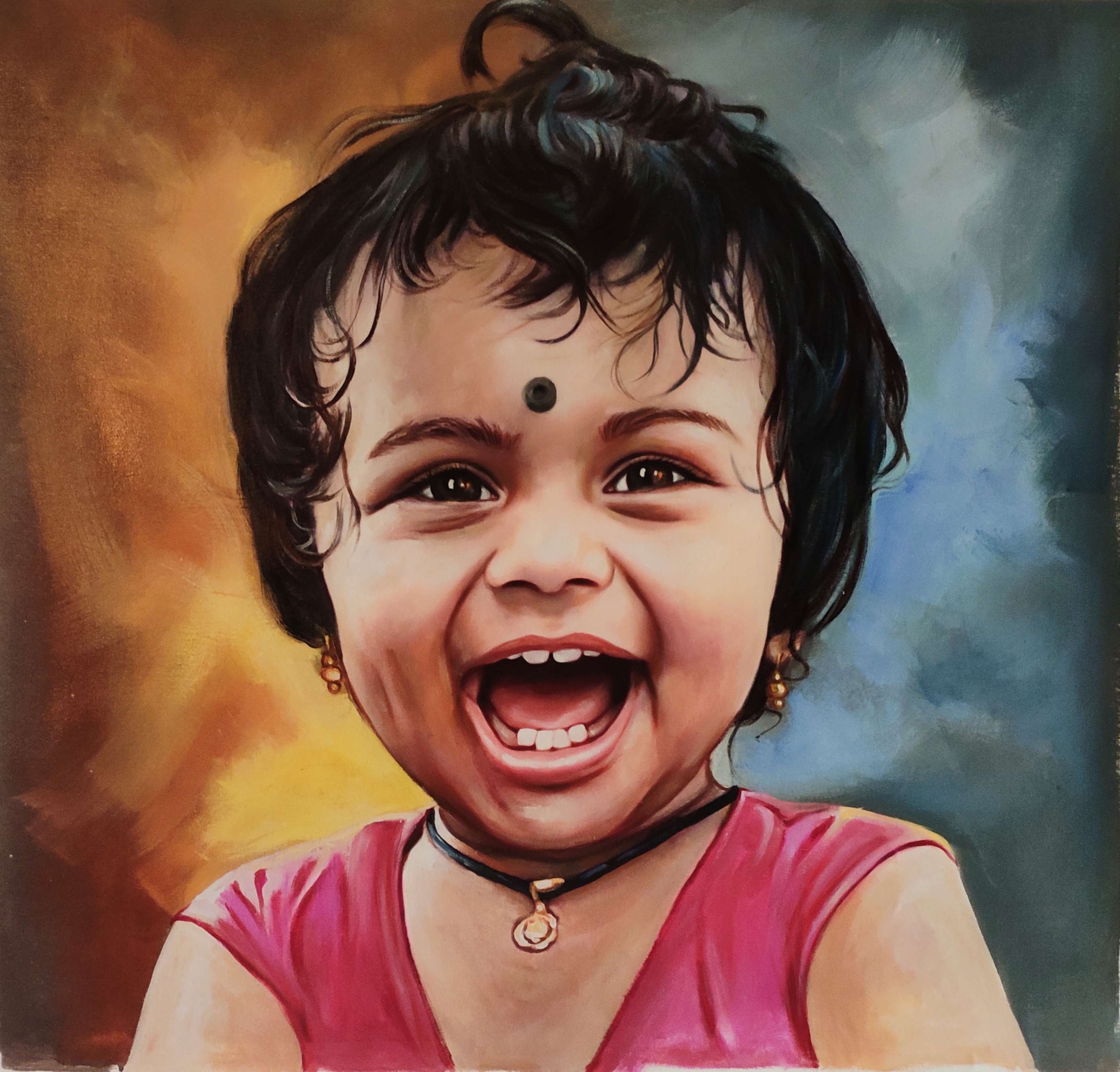 Smiling Child oil portrait
Smiling Child oil portrait
These types of portrait paintings are the most common among the varieties of portrait paintings. They also make for great gifts for important occasions like birthday gifts, mothers day gifts, and anniversary gifts.
Three quarters view Portrait Painting
Three-quarters of views are portraits are neither full-face portraits nor side profiles but are in between the two poses, where the head is slightly turned, looking directly at the viewer or a distance from the canvas. Three-quarter portraits were favored by the artist in depicting themselves in self-portraits
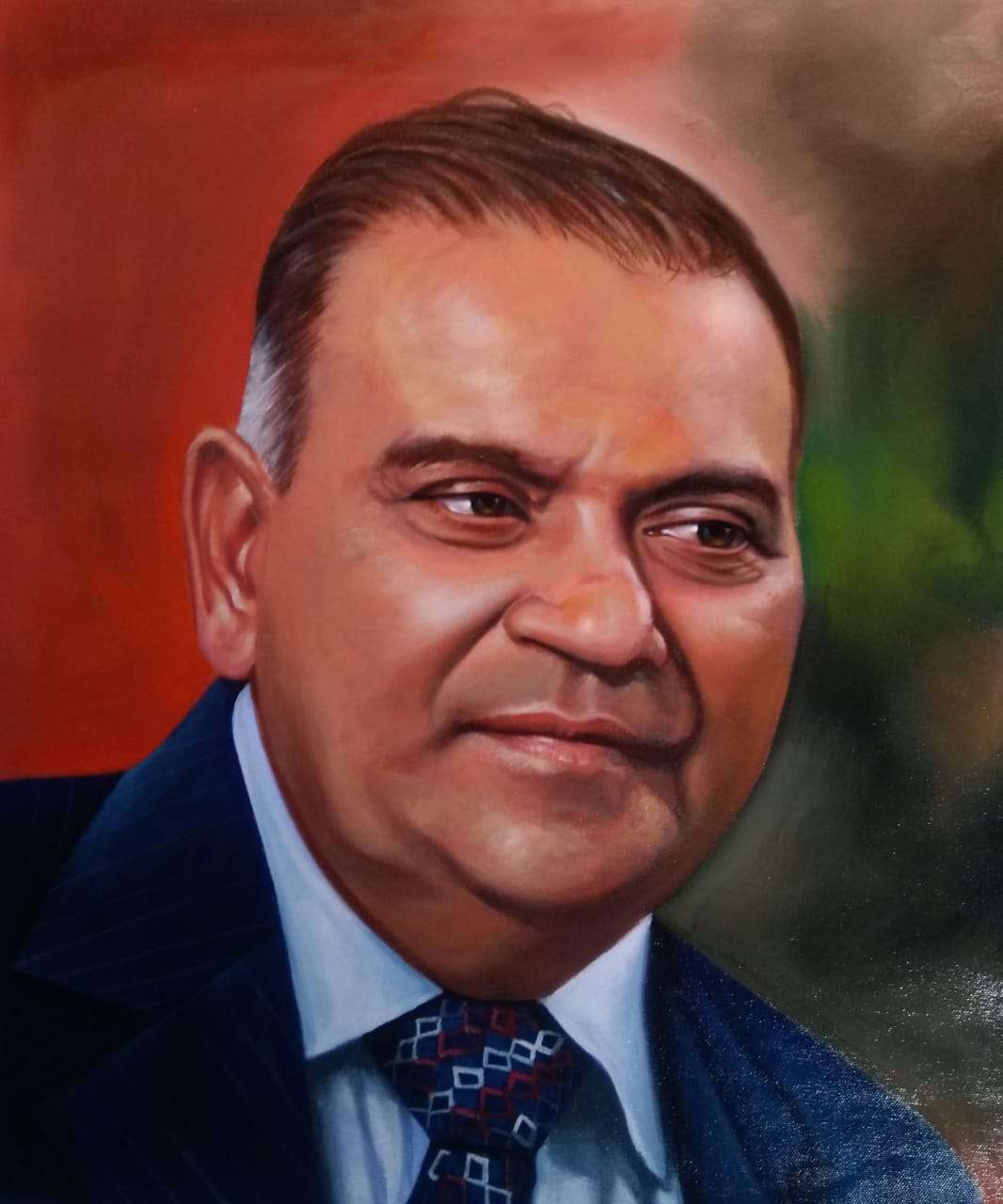 Three-quarters view oil painting portrait
Three-quarters view oil painting portrait
Tronie
Tronie was a painting technique popular during the Dutch golden age era and the Flemish paintings. Technically, Tronei is not a portrait, but a study of expressions. The intent of the artist creating the Tronie, was to capture the expressions of the face.
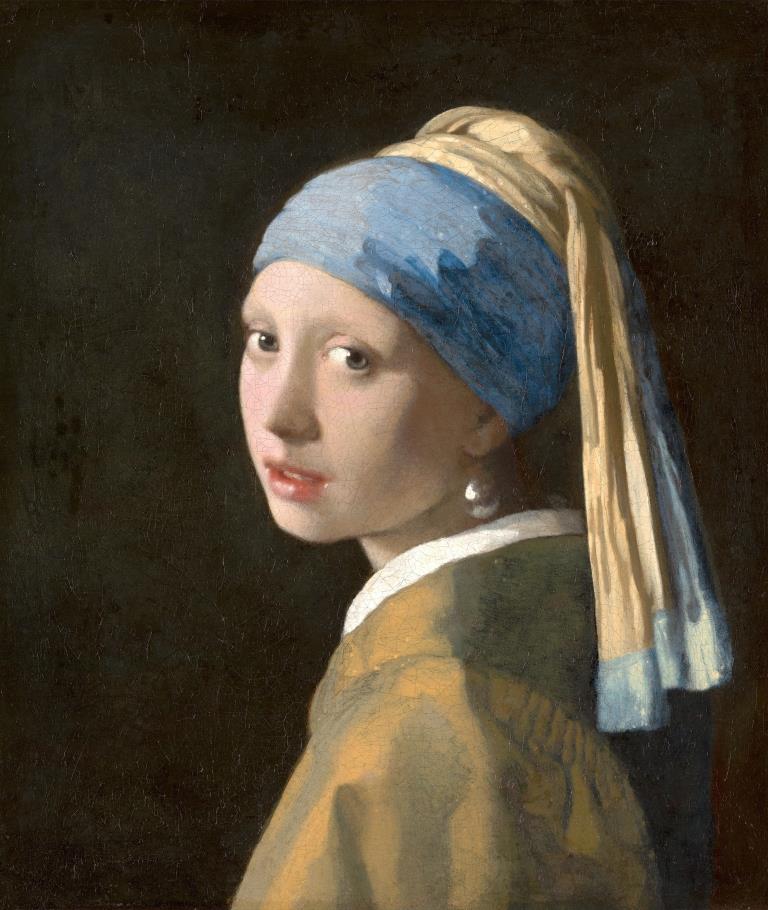 Girl with a Pearl Earring
Girl with a Pearl Earring
Handmade Art Reproductions & Landscape Paintings
American art historian, Walter A. Liedtke wrote in his book, Vermeer and the Delft School, " The now defunct term refers to "heads'', "faces", or "expression", or "mug", and to a type of picture familiar from many examples of Rembrandt and his followers. The majority of Dutch tronies appear to have been based upon live models, including the artist in question or a colleague, but the works were not intended as portraits. Rather they were meant as studies of expression, type, physiognomy, or any kind of interesting character(an old man, a young woman, a "turk", a dashing soldier, and so on).
According to the number of people in the painting:
Portrait paintings can also be classified based on the number of people included in the painting. Based on the number of people portrait paintings can be categorized as
Individual Portrait Painting
An individual portrait as the name implies is a portrait painting of a single person or subject. Individual portraits are generally used to highlight the character's life, facial expression, and outlook of the character. Individual portraits or single-person portraits are often created to celebrate an individual's life's accomplishments or to create a memorial painting in remembrance of the departed soul.
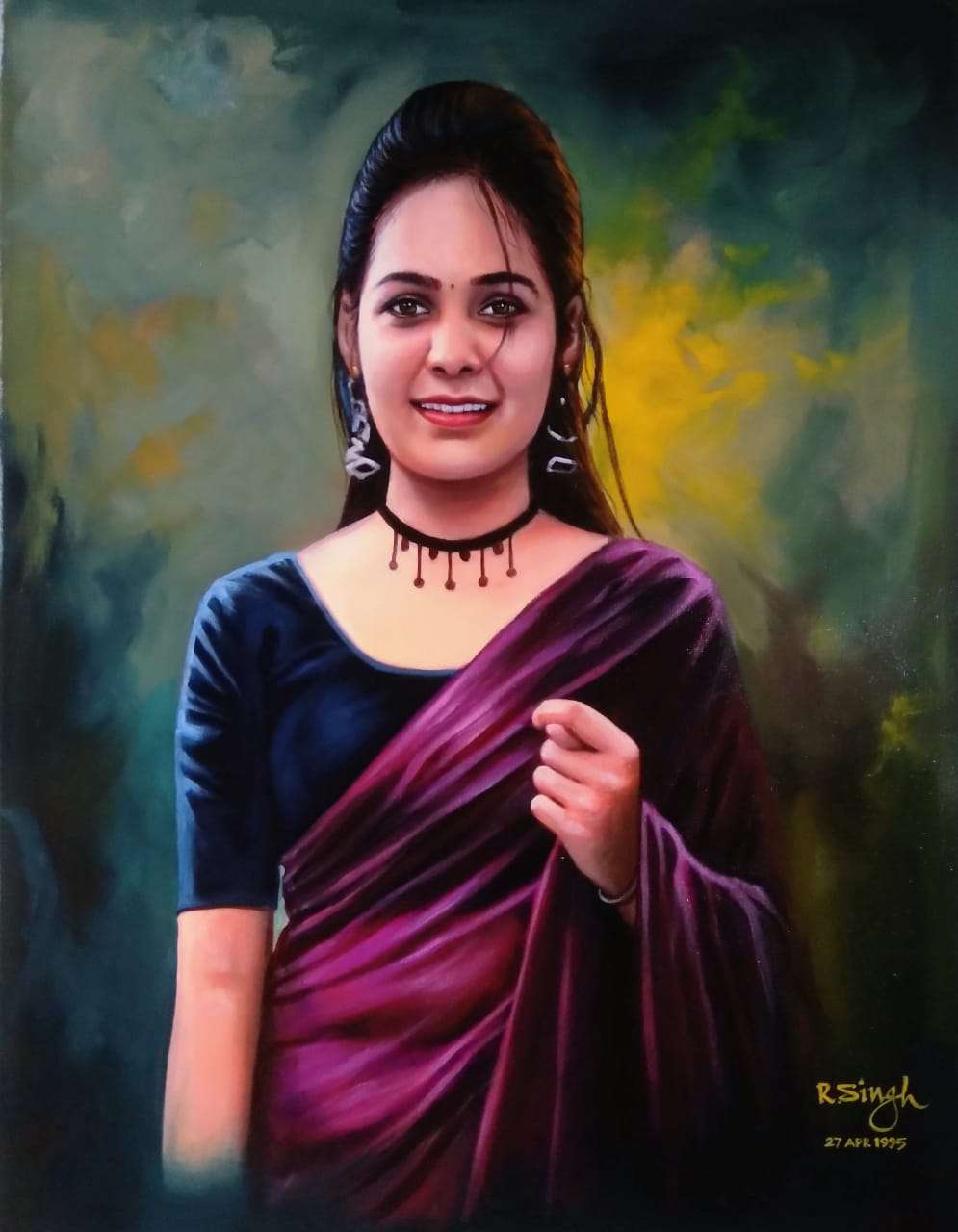 Individual portrait painting of a young woman
Individual portrait painting of a young woman
Double Portrait Painting
As the name implies, it is a portrait painting of two individuals. The presence of two individuals on the canvas allows the artist to depict the bond between them. A double portrait allows the artist to play with the contrasting or complementing personalities of the two figures and create a new sense, relation, or meaning.
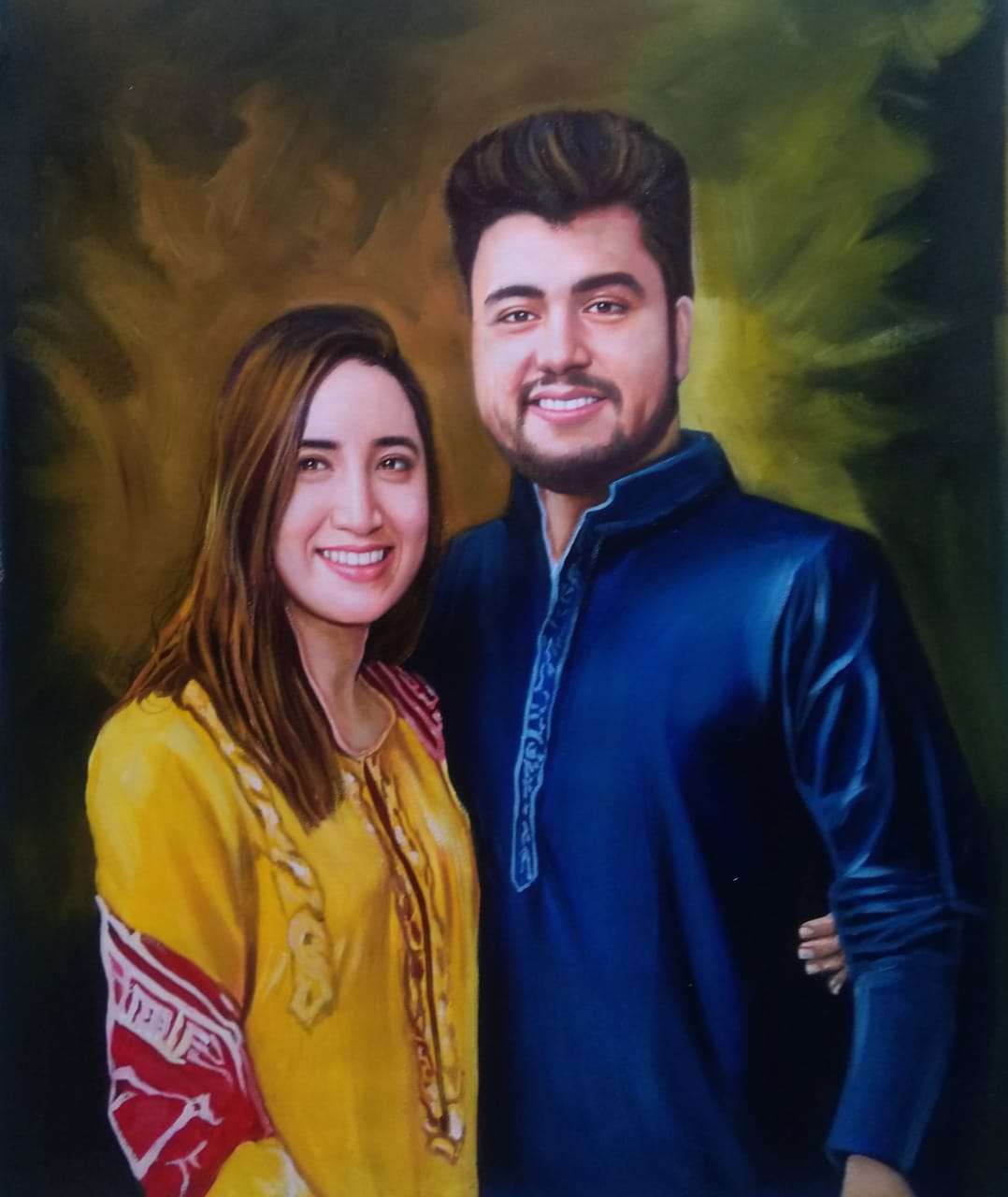 Couple oil painting portrait
Couple oil painting portrait
Double portraits are mostly used to depict couples. Couple portraits, wedding portraits, and engagement portraits are the most popular forms of double portrait painting. While couple portraits are very popular, depicting other relations through double portraits is also very popular. Double portrait paintings can be Mother son portraits, father-daughter portraits, brother-sister portraits, and any other relations of significance.
Group Portrait Painting
It is a portrait that focuses primarily on the members of the group (like a family portrait, an office group, a friends group) and doesn't include any distractions that might distract the viewer. In a group portrait painting, the artist depicts a group of people, related in some way to each other, in the painting. Group portraits can have poses, where the group members are all standing or sitting or some combination thereof, where some members are sitting and others are standing.
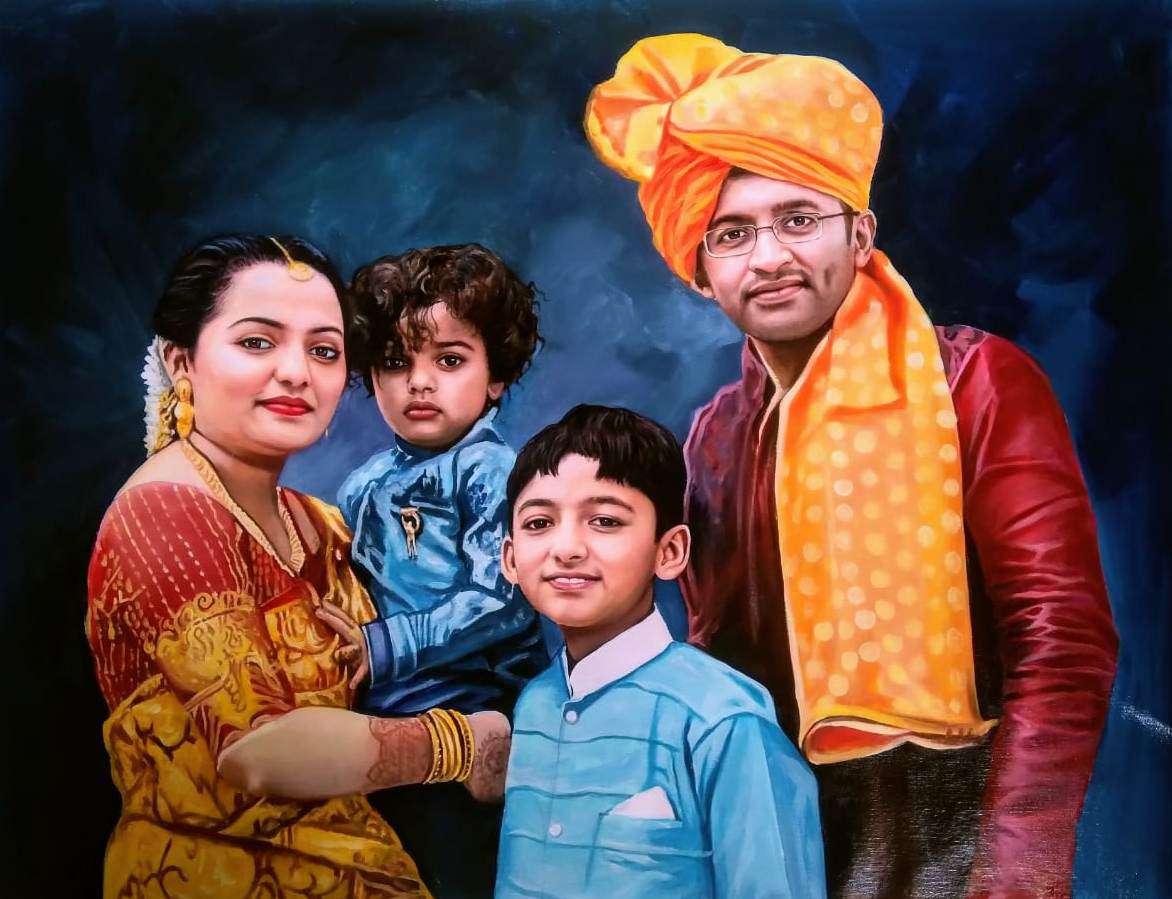 Family oil painting portrait
Family oil painting portrait
Modern techniques now enable an artist to create group portraits by merging two or more images together. These types of paintings are also called composite portraits and are mostly used in group settings. Again, depending on the social setting, the group portrait paintings can be family portraits, in a family setting, top management or leadership portraits in a corporate setting, or a group of social or political leaders in a social/ political setting.
Order Your Group Portrait Painting from Photo Today
Self-portrait Painting
Self-portraits are a special genre of single portraits. Artists depict themselves in self-portraits. Self-portraits act as a memoir of the artist or the painter. Self-portrait painting is a popular genre among well-known artists. From Leonardo da Vinci to Vincent Van Gogh, almost all famous artists have made a few self-portraits during their lifetime.
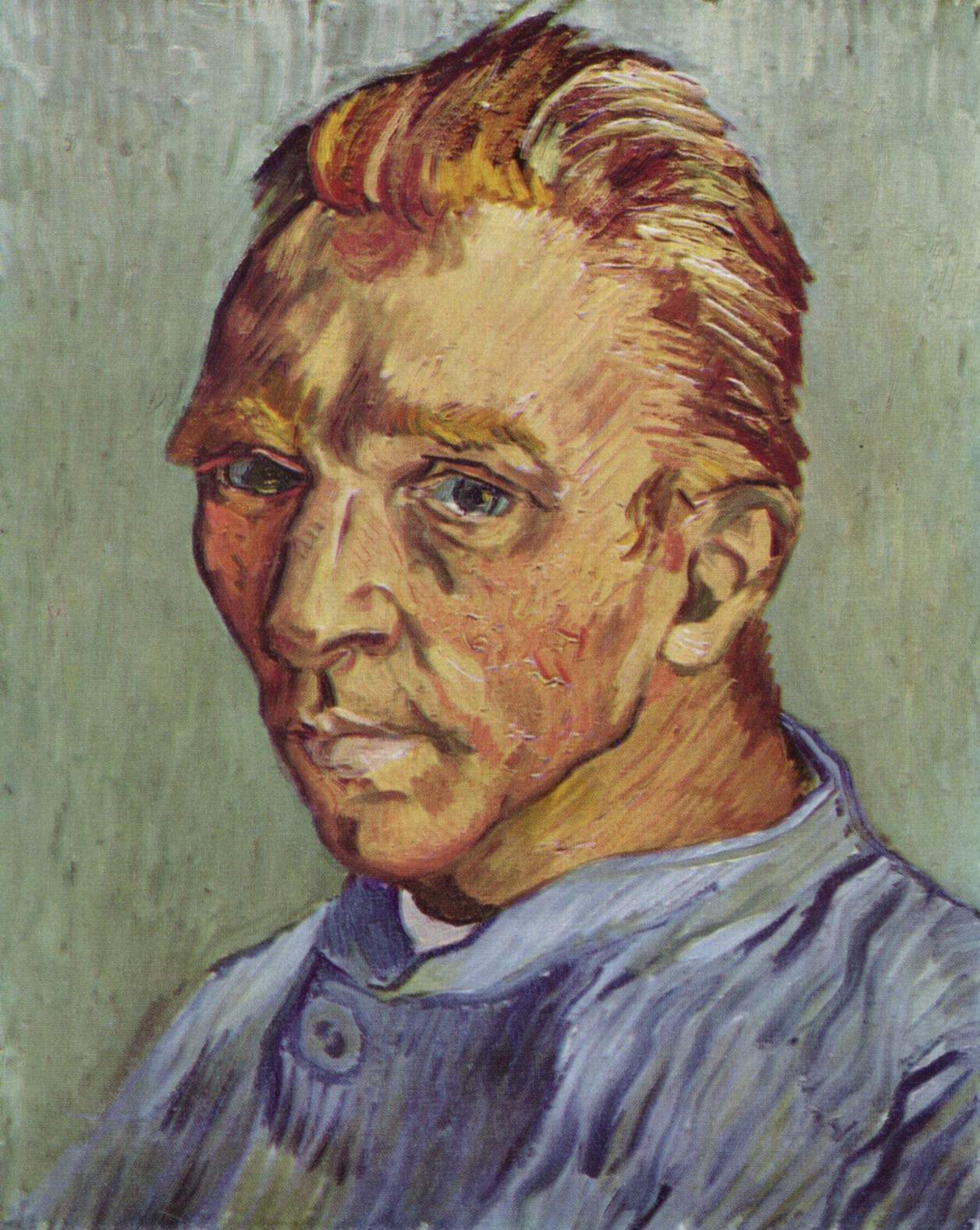 Vincent van Gogh Self-portrait
Vincent van Gogh Self-portrait
Conclusion
As can be seen from the above article, there are many types of portrait paintings, which will help you to choose the best option when you decide to order custom handmade portraits.
About Us:
Paintphotographs.com is India's leading custom art platform. We turn your favorite photos, pics, and images into luxurious handmade portrait paintings. Our work includes handmade portraits, custom oil reproductions, charcoal drawings, and sketches. As a team of accomplished artists, we use museum-quality canvas, the best international brands of colors such as Winsor & Newton and Daler Rawney. We work with various mediums, including oil, acrylic, mixed media, graphite, and charcoal.
To order a custom handmade oil portrait painting you can visit our order now page. You can order custom Wedding Paintings, Couple Paintings, Memorial Paintings, Family Paintings, Baby portraits and Children Paintings, Photo to paintings, and Pet Portrait Paintings from Photo.
You can visit our pricing page to know the prices of our portrait paintings. To connect with us ping us on our chat messenger on the website, ping us on WhatsApp, call us at 918291070650, or drop us an email at support@paintphotographs.com
You can visit our gallery pages to see our work. We make photo to paintings, couple paintings, memorial paintings, Kids and Baby Portrait paintings, God & Religious Paintings, Old Photo to Paintings, Wedding couple Paintings & Marriage Portraits, Family Paintings, Pet Portrait Paintings, Radha Krishna Paintings, Oil Portraits of Gurus, Saints & Holy Men, Charcoal and Pencil Sketches, Custom Landscape & Cityscape paintings, Contemporary Art Reproduction & Replica Paintings, Old Master Reproduction & Replica Art, Monochrome and Black & White portrait paintings, Historical Portraits and Shivaji Maharaj Paintings, Celebrity & Political Leaders Portraits. We can also merge separate photos to create a single seamless painting called Composite portraits to add deceased loved ones to make a family oil portrait as though they were present.
Our custom handmade portraits make beautiful Anniversary Gifts, Engagement Gifts, Birthday Gifts, Retirement Gifts, Housewarming Gifts, Mother's Day gifts, and luxurious gifts for many important occasions.
Paintphotographs.com provides bespoke services for art patrons, interior designers, and architects. It helps you create the perfect pieces for residential and commercial projects and serves as a platform for artists to showcase their work.
If you are an art aficionado interested in writing a guest post on art, connect with us.
Want to read more? Check our reading recommendations below! Please refer to the Notes and Reference section for sources referenced in the article.
Like this story? Then you will love our podcasts on Spotify. Listen to our deep dives and fascinating stories from the art world. Join our nearly 20,000-strong community on Facebook, WhatsApp, and X.
Want to see our art? Join our community of 500,000+ subscribers on the Paintphotographs YouTube channel, Instagram, and Pinterest for some amazing art pics & art videos!
Notes & reference section
Room 9: The Kit-cat Club - National Portrait Gallery

